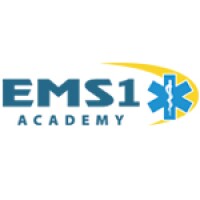The Model Uniform Core Criteria for Mass Casualty Incident Triage, or MUCC, is a standard set of guidelines that all mass casualty triage systems should follow. The MUCC is intended to ensure consistency among responders when triaging patients at a mass casualty incident. The SALT Triage System is the only triage method which currently meets the Model Uniform Core Criteria.
An expert-panel, convened by the NHTSA office of EMS, discussed the process to develop MUCC and the instructional guidelines, during an NHTSA Office of EMS webinar on Feb. 7, 2018. The panelists included E. Brooke Lerner, Ph.D., a former EMS field provider and researcher at the Medical College of Wisconsin; Kandra Strauss-Riggs, operations director, National Center for Disaster Medicine and Public Health; and Leaugeay Barnes, an EMS educator who piloted the use of the instructional guidelines in Oklahoma and Hawaii.
Lerner began the presentation by describing the origins of MUCC in a 2006 CDC-sponsored panel which was charged with developing a national MCI triage guideline to increase interoperability. The Sort-Assess-Lifesaving Interventions-Triage/Treatment (SALT) Triage System came out of the work done by the CDC panel. The SALT Triage System is meant to be a simple and easy to remember method to rapidly group and sort a large number of patients
What is MUCC?
The Model Uniform Core Criteria (MUCC) is a set of criteria for a triage system. MUCC is not a triage system. A triage method, to be MUCC compliant, must satisfy 24 MUCC criteria. Those criteria are grouped into:
- Global sorting.
- Lifesaving interventions.
- Individual assessment.
Barnes described her involvement in piloting MUCC and teaching EMT and paramedic students with a PowerPoint slide deck lecture and a tabletop exercise to practice triage skills. The tools were also used to teach nursing students.
A recording of the webinar is embedded at the end of this article or can be viewed on EMS.gov webcast page and the Office of EMS YouTube channel.
Memorable quotes on MUCC training
“What we found among all the triage systems out there is tons of common features. But we did not find overwhelming evidence supporting any system. Most systems had identified weaknesses.”
—E. Brooke Lerner, Ph.D., lead investigator for the development of MUCC
“There are numerous triage systems that often don’t work well together. Implementation and interpretation can vary greatly.”
“The whole beauty of this (SALT) is how simple it is and easy to remember.”
—Leaugeay Barnes, paramedic educator
“Instructional guidelines are a companion to the National EMS Education standards.”
—Gam Wijetunge, NRP, NHTSA Office of EMS
Top takeaways on MUCC and SALT
Here are five top takeaways on MUCC and SALT for EMS training officers and educators.
1. Use evidence-based triage system for MCI patients
SALT Triage system is the method that emerged from the CDC 12-year project. It is a freely available method based on available research and widely accepted by EMS industry professional organizations, membership associations and affiliated organizations in emergency medicine.
Any triage system needs to apply to all ages and populations of patients. Systems need to also be effective in all hazards and all environments. The well-known START triage method doesn’t meet the MUCC criteria.
2. SALT is the first-level of sorting
SALT triage is the initial method to sort patients into five groups:
- Dead.
- Expectant.
- Immediate.
- Delayed.
- Minimal.
This rough, first-level sorting helps rescuers identify the patient who need life-saving interventions, like severe hemorrhage control. SALT prioritizes patients for movement to a casualty collection point, additional on scene treatment and transport to receiving facilities.
Additional patient assessment and re-assessment needs to be performed by prehospital providers to make transport priority and resource allocation decisions.
3. Triage KISS
For mass casualty triage to succeed, it has to be simple and easily completed by providers of all levels, regardless of their previous experience. SALT triage can be done by anyone who knows the system and is able to perform rapid lifesaving interventions, like opening an airway and controlling major hemorrhage.
4. Practice MCI triage with tabletop exercise
Barnes described the tabletop exercises she has used with EMT students, paramedic students, police officers and nursing students. The tabletop exercise followed a PowerPoint lecture. Both activities took about an hour in the pilot programs and focused on these learning components:
- Global sorting of patients as sick or not sick without having to “get out a watch and count.”
- Individual patient assessment for breathing, following commands, peripheral pulse and major hemorrhage.
- Life-saving interventions, which focus on CAB – hemorrhage control, basic airway management and chest decompression.
All groups of participants in the pilot education programs were successful in triaging the patients. Nursing students in the Barnes’ Hawaiian cohort were able to put their skills to use in a full-scale disaster response exercise.
5. Use triage tags or triage tape to identify patient triage category
There are many triage kits with tape and tags that can be used when performing SALT triage. Pick a product that includes a gray colored tape or card for patients who are expectant. Or update your existing department triage kits with gray tape and a laminated copy of the SALT Triage System flowchart.
Learn more about mass casualty incident triage
Here are EMS1 articles and quizzes to learn more about MCI patient triage.
- How to use SALT to triage MCI patients
- START method makes MCI patient triage fast, simple
- How civilian and combat triage differ
- 10 tips for ambulance staging at mass casualty incidents
- 9 strategies for deploying a mass casualty trailer
- Quiz: How accurately can you triage 10 MCI patients?
- Quiz: How accurately can you apply the SALT triage method to MCI patients?















